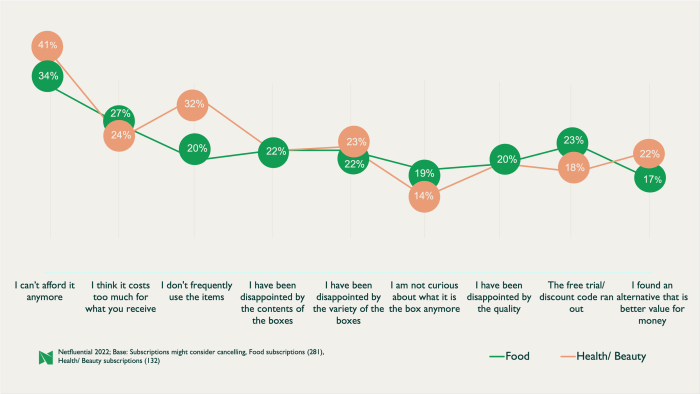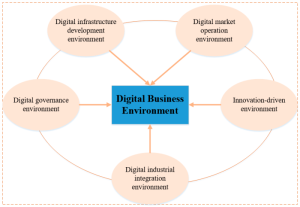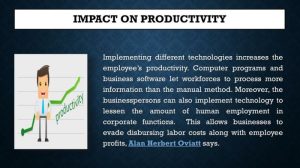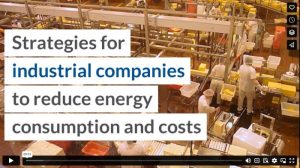
Dive into the realm of Subscription services for consumers, where convenience meets innovation, and choices abound. From curated boxes to personalized experiences, the world of subscriptions is yours to explore.
Discover the perks, the trends, and the endless possibilities that await in this subscription-filled universe.
Subscription services for consumers
Subscription services for consumers are a popular business model where customers pay a recurring fee at regular intervals to access a product or service. This model offers convenience and flexibility to consumers by providing them with access to various goods or services without the need for individual purchases each time.
Benefits of subscription services for consumers
- Cost savings: Subscriptions often offer discounts or lower prices compared to one-time purchases, allowing consumers to save money in the long run.
- Convenience: Subscribers can enjoy automatic deliveries or access to services without the hassle of reordering each time.
- Customization: Many subscription services allow consumers to personalize their experience based on their preferences and needs.
- Discoverability: Consumers have the opportunity to explore new products or services they may not have tried otherwise through subscription packages.
Types of subscription services available to consumers
- Streaming services: Platforms like Netflix, Hulu, and Spotify offer subscription-based access to a wide range of movies, TV shows, music, and podcasts.
- Meal kit services: Companies such as Blue Apron and HelloFresh deliver pre-portioned ingredients and recipes to subscribers’ doorsteps for easy meal preparation.
- Beauty boxes: Subscription services like Birchbox and Ipsy provide curated boxes of skincare and makeup products for beauty enthusiasts to discover new brands.
- Clothing subscriptions: Companies like Stitch Fix and Rent the Runway offer clothing rental or personalized styling services through monthly subscriptions.
Chemicals and Allied Products

Chemicals and allied products play a crucial role in various industries, serving as key components in manufacturing processes. These products are used in sectors such as pharmaceuticals, agriculture, construction, and electronics, among others.
Impact on the Environment
Chemicals and allied products can have significant environmental implications if not managed properly. Their production and disposal can lead to pollution of air, water, and soil, affecting ecosystems and human health. It is essential for industries to adopt sustainable practices to minimize these negative impacts.
- Industrial chemicals like sulfuric acid and ammonia are commonly used in manufacturing processes.
- Agrochemicals such as pesticides and fertilizers are essential for crop production.
- Specialty chemicals like adhesives and coatings are used in various applications.
- Pharmaceuticals play a crucial role in healthcare and disease treatment.
Construction and Maintenance
Construction and maintenance services play a crucial role in the success and longevity of businesses. From building infrastructure to ensuring regular upkeep, these services are essential for creating a safe and functional environment for employees and customers alike.
Importance of Construction and Maintenance Services
- Construction services are vital for businesses looking to expand or renovate their facilities. Whether it’s building a new office space or adding a warehouse, construction projects help companies meet their growing needs.
- Maintenance services, on the other hand, ensure that existing structures and equipment are well-maintained and in good working condition. This helps prevent costly breakdowns and downtime, ultimately saving businesses time and money.
- Regular maintenance also contributes to the overall safety and security of a business premises, reducing the risk of accidents and ensuring compliance with relevant regulations and standards.
Different Approaches to Construction and Maintenance Projects
- Traditional construction methods involve sequential steps, starting from design and planning to actual construction. This approach is time-tested and well-established, but it can be slow and costly.
- On the other hand, modern methods like modular construction and prefabrication offer faster and more cost-effective alternatives. These approaches involve off-site fabrication of building components, which are then assembled on-site, reducing construction time and minimizing waste.
Latest Trends in Construction and Maintenance Technologies
- Building Information Modeling (BIM) is revolutionizing the construction industry by creating detailed 3D models that help architects, engineers, and contractors visualize the entire building process. This technology improves collaboration, reduces errors, and enhances project efficiency.
- IoT (Internet of Things) is being increasingly used in maintenance services to monitor equipment and assets in real-time. IoT sensors collect data on performance and condition, allowing businesses to predict maintenance needs and avoid costly breakdowns.
- Drones are also being used for construction site inspections and maintenance tasks. These aerial devices provide a bird’s eye view of the site, enabling quicker and more accurate assessments of structures and equipment.
Consumer Goods and Services

Consumer preferences for goods and services are influenced by a variety of factors such as price, quality, brand reputation, convenience, and personal values. These preferences can vary greatly depending on individual needs, lifestyle choices, cultural influences, and economic conditions.
Factors Influencing Consumer Preferences
- Price: Consumers often consider the price of a product or service when making purchasing decisions. They may opt for cheaper alternatives or splurge on luxury items based on their budget.
- Quality: The quality of a product or service plays a significant role in consumer preferences. People are willing to pay more for higher quality items that offer durability and performance.
- Brand Reputation: Established brands with a positive reputation tend to attract more consumers due to trust and reliability associated with their products.
- Convenience: Consumers value convenience and ease of access when choosing goods and services. Online shopping, fast delivery, and user-friendly interfaces are key factors.
- Personal Values: Some consumers prioritize ethical considerations, sustainability, or social responsibility when selecting products. They may choose brands that align with their values.
Key Trends in the Consumer Goods and Services Industry
- Personalization: Brands are increasingly focusing on personalized products and services to cater to individual preferences and needs.
- E-commerce Boom: The rise of online shopping has transformed the consumer goods industry, with more people opting for the convenience of shopping from home.
- Sustainability: Eco-friendly products and sustainable practices are gaining popularity as consumers become more environmentally conscious.
- Health and Wellness: There is a growing demand for health-focused products and services as consumers prioritize their well-being.
Impact of Consumer Behavior on Product Development
- Consumer feedback and preferences drive innovation in product development, leading to the creation of new and improved offerings.
- Understanding consumer behavior helps businesses anticipate market trends and adapt their strategies to meet changing demands.
- Successful product launches often result from aligning with consumer preferences and addressing their needs effectively.
Business Energy
Managing energy effectively is crucial for businesses to reduce costs, minimize environmental impact, and ensure sustainable operations.
Renewable and Non-Renewable Energy Sources
Businesses often rely on a mix of renewable and non-renewable energy sources to meet their energy needs. Renewable sources such as solar, wind, and hydro power offer clean and sustainable options that help reduce carbon footprint. On the other hand, non-renewable sources like fossil fuels provide reliable but environmentally harmful energy.
Optimizing Energy Efficiency
- Investing in energy-efficient technologies and equipment can significantly reduce energy consumption and costs.
- Implementing smart energy management systems allows businesses to monitor and control energy usage in real-time.
- Regular energy audits help identify areas for improvement and optimize energy efficiency in operations.
- Encouraging employee engagement and awareness on energy conservation practices can lead to a more sustainable workplace.
Business Environment
In the business world, the environment plays a crucial role in shaping the success and sustainability of companies. A business environment consists of various components that influence how organizations operate and compete in the market.
Components of a Business Environment
- Internal Environment: This includes factors within the organization such as company culture, management style, and resources.
- External Environment: Comprised of factors outside the organization like economic conditions, market trends, competitors, and government regulations.
- Technological Environment: Refers to advancements in technology that impact how businesses operate, innovate, and deliver products or services.
- Social Environment: Involves societal trends, demographics, and consumer behavior that can influence business decisions and strategies.
Factors Affecting Business Competitiveness
- Market Competition: The level of rivalry in the market can significantly impact a company’s competitiveness and market share.
- Economic Conditions: Fluctuations in the economy, such as inflation, interest rates, and unemployment, can affect consumer spending and business performance.
- Regulatory Environment: Laws and regulations imposed by governments can create barriers to entry or affect how businesses operate within a certain industry.
- Technological Advancements: Companies that fail to adapt to new technologies risk falling behind competitors who innovate and leverage technological advancements.
Adapting to Changes in the Business Environment
- Flexibility and Agility: Companies need to be flexible and agile in responding to changes in the business environment to stay competitive and relevant.
- Innovation: Embracing innovation and constantly seeking ways to improve products, services, and processes can help businesses adapt to changing market dynamics.
- Strategic Planning: Developing long-term strategies that consider the evolving business environment can help organizations anticipate challenges and opportunities.
Concluding Remarks
In a nutshell, Subscription services for consumers offer a gateway to a world of convenience, customization, and surprises. Embrace the future of shopping and lifestyle with just a click of a button.
Frequently Asked Questions
What are subscription services for consumers?
Subscription services for consumers are recurring delivery services that provide products or experiences based on a set schedule or preferences.
What are the benefits of subscription services for consumers?
Benefits include convenience, cost savings, personalized experiences, and discovery of new products.
How do different types of subscription services compare?
Types vary from beauty boxes to meal kits, each offering unique perks and tailored experiences for consumers.





